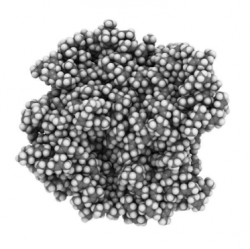Rubber Compound – what is it?
What is a Rubber Compound?
There is a misunderstanding that an elastomer compound is made out of one ingredient and that it is the same for every different type of polymer. The fact is that a rubber compound can be a combination of 3 to 15 various elements and thousands of different formations.
Standard elastomer composition based on parts per hundred (phr):
POLYMER: 100phr
FILLER: 30 – 60phr
ANTIOXIDANT: 1 – 3phr
ANTIOZONANT: 1 – 3phr
OIL: 5 – 30phr
CURE: 5 – 10phr
POLYMER
Polymers are the most significant components in a rubber compound. They give the foundations for physical, chemical and moulding attributes. Standard polymers are characterized by chemical performance and stickiness rating. For example, Nitrile (Buna-N) compound is the quantity of Acrylonitrile (ACN) – the higher the ACN content, the more oil resistance. These polymers are, in turn, sold with fluctuating ACN content.
FILLER
Carbon Black is one of the most popular fillers. This provides physical strength to the rubber compound and its black colour. There are different particle sizes and surface functions. Altering the particle size can enhance physical features whilst increasing the compression set.
For coloured elements, Mineral Fillers and White Clays help to make the compound white, in order to add the requested colour. These kinds of fillers are generally less strengthening than Carbon Black. Mixing these fillers together helps lower the cost of the overall element.
ANTIOXIDANT
Antioxidants assist protecting the element from high temperature whilst in use. These components can take up free radicals that can interrupt the polymer bonds causing breakage and lower service life of the element.
ANTIOZONANT
Antiozonants, such as Wax, help with the blooming process post moulding. It protects the elastomer from ozone attack. For example, a new tyre will show a slight haze or have a wax feel.
OIL (PROCESSING AIDS)
Oils aid the compounding process making the rubber less dry. They help to lower the stickiness of the overall element in order to help with moulding. On the other hand, adding more oil can also reduce the hardness of the elastomers. Therefore, lower Shore A hardness compounds will generally have more oil in the composition.
CURES
Sulfur is the standard curative for elastomer compounds. Rubber polymers are tangled hydrocarbon links that won’t hold shape. Bonds of CARBON – SULFUR – CARBON are created in the process of vulcanization. Vulcanization is the heating of rubber with sulfur and this creates the rubber bonded chains.
Peroxide is another common vulcanizing agent, it forms direct bonds to the carbon links, creating CARBON – CARBON bonds. These bonds generally provide higher service temperature and low compression sets due to the fact that they take more energy to break.
There are many different ingredients that can be used to provide various features. Due to all those combinations, not all composites are the same. Rubber compounding is a science to generate desired features and properties by fluctuating the ratios of components and compensating for the interactions. This is the reason why most compounders keep their rubber compositions private. It can take numerous alterations and hours of evaluating to perfect the mechanical features while maintaining good processing.
If you require additional information about our range of products and services, download our catalogue or contact a member of the team.
E & OE. M Barnwell Services endeavour to make sure that all content is correct. Manufacturing partners have provided this information.
